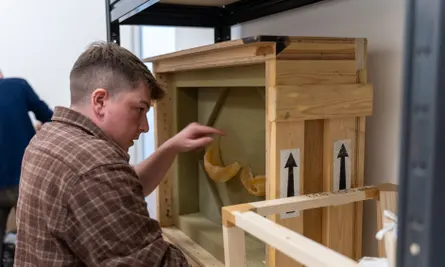
Claye Bowler’s Trans Experience: ‘Owned and Shown’
Trans art has been developing and thriving in the shadows of the wider art community for decades. Names such as Claude Cohan and Lili Elbe may not seem familiar to many, yet their powerful works have helped generations to connect with the community and with themselves. Trans artist Claye Bowler has bravely put his experience on display in all its beauty, pain and vulnerability. His revolutionary exhibition, Top, opened at the Henry Moore Institute this month, and reflects a homecoming for Bowler, born in West Yorkshire and brought up amongst the works of Barbara Hepworth and Moore at the Yorkshire Sculpture Park.
Bowler is now twenty-seven, and this exhibition shares the story of Bowler’s six year transition, documenting his journey through monumental tests of body and mind. The top surgery (breast removal) being facilitated entirely through the NHS reflects the growing recognition of the importance of treating gender dysphoria. Top is a testament to Bowler’s recovery, documenting his transition through the collection of mementos and artefacts, alongside the creation of visceral artwork. He stands brave and tall, after overcoming the struggles of dysphoria and the physical strain of such intense surgery.
Upon entering the small room dedicated to Bowler’s collection, it is almost overwhelming how much material you’re met with. Over 200 artefacts are on display, for anyone to see and to judge. The room has the air of a memorial, quiet and respectful, even intimidating. How could it not be? Bowler hides nothing in his display. Relics vary from an old hairbrush, the long hair still stuck between the bristles, to surgical scalpels, their sterile gleam immediately making the reality and anxiety of surgery overwhelmingly apparent. One particularly moving aspect of the exhibition is his blood drawings, completed in 2017 in the midst of his transition process. These pieces were created using Bowler’s own blood, applied with his nipple. The combined use of his own fresh blood and nipple creates a powerful sense of both raw pain and vulnerability, bordering on desperation as shown through the visceral appearance of the pieces. Bowler’s feelings of vulnerability and distress during the creation process of these pieces are expressed by Bowler himself, when he recalled ‘after creation and cleaning, I got into bed and wept.’
I was lucky enough to get an account of the reactions visitors had to the exhibition from a member of staff overseeing it. I learned that the most significant difference in reaction was seen between the young and the old. On one occasion an older couple refused to enter the room against the encouragement of their Italian translator. “They don’t give the work a chance, or themselves” was the naturally frustrated reaction from the staff member. Trans artists must take over the trans narrative, it cannot be told any other way; “it has to be owned and shown by those that live the experience.”
This exhibition is putting one man’s experience on display in a wholly confrontational way. There is no romanticism, no abstracting, nothing to hide behind. This is his reality in its totality. The exhibition is about as human as it gets, and as a cisgender man I came away feeling moved that someone would share such personal experiences with me. His vulnerability shows his bravery; Bowler is unashamed to bring such a personal side of himself into his artwork, under the spotlight.
The exhibition is free to visit at the Henry Moore Institute until the 15th Jan 2023.
Featured Image Credit: The Guardian

